
CL-TPU 5 Year Warranty Heat Repair TPU Color PPF Gloss Car Wrap Vinyl
Size : 1.52×16.5M/5x54FT
Professional Car Paint Protection Film Supplier, TPU PPF Car Paint Protection Film, TPH PPF Paint Protective Film, PVC PPF Paint Protection Film

Size : 1.52×16.5M/5x54FT

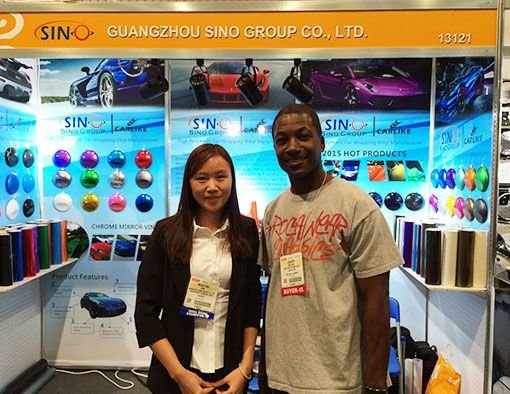
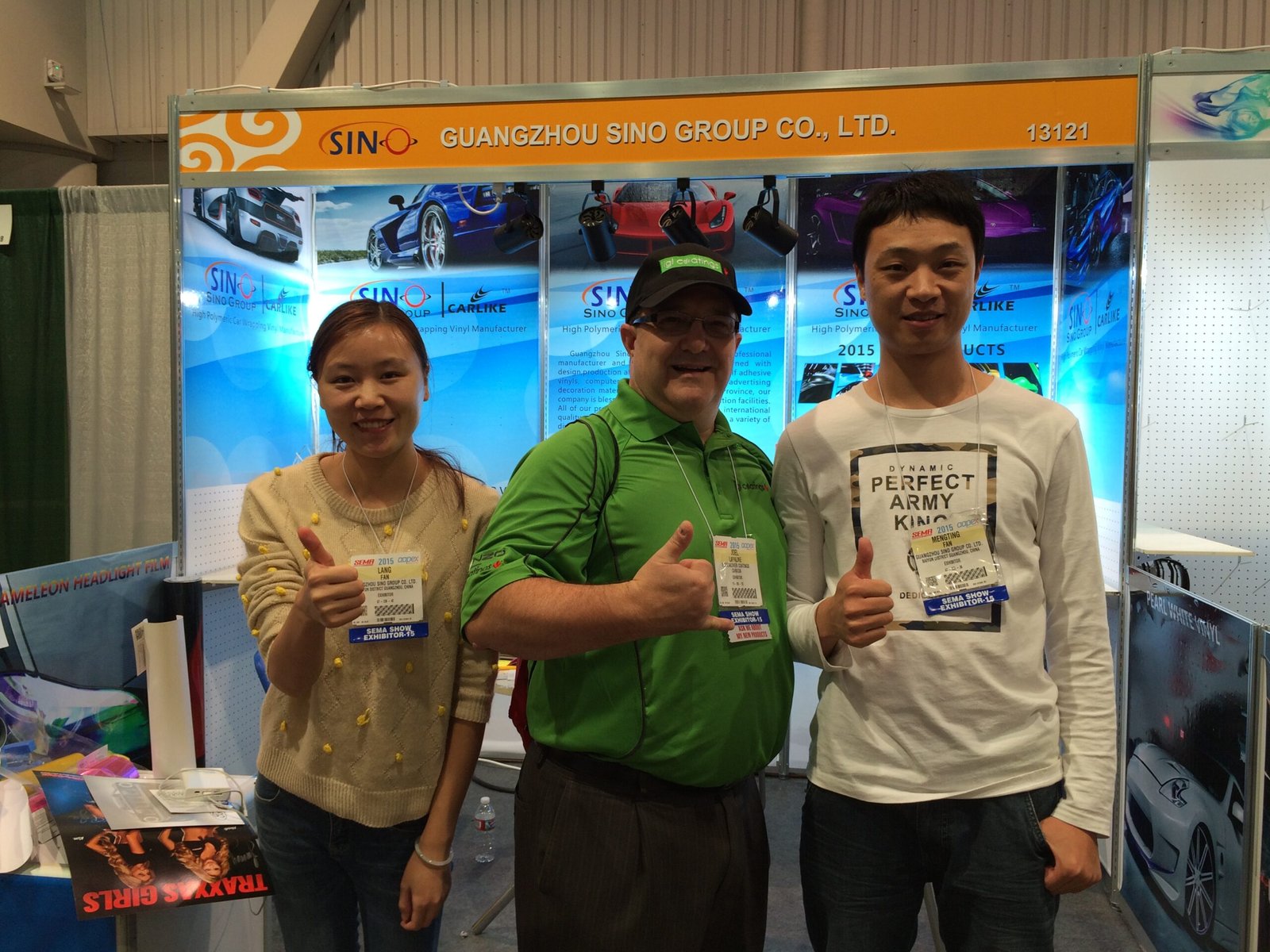
The cost depends on the size of vehicle being wrapped but for an average size car it is very less as compared to re-spray. If you hire a professional wrapper to wrap the car, the cost can be from $2,000 to $8,000 depending on the value of your car. Usually, the car vinyl wrap price is based on the vinyl film quality and the wrapper skill, of course it is also related to the value of your car. The vinyl film can be protect your car paint very well, which makes the expense worthwhile. Price for vinyl wrap on BMW US$3000-5000 Price for vinyl wrap on Mercedes-benz US$3000-5000 Price for vinyl wrap on Volkswagen US$2500-5000 Price for vinyl wrap on Nissan US$2500-5000
Car wraps were actually invented in the 1950s, but they were costly, so their use was limited to high-end vehicles. In recent years, wraps have become so popular that prices have dropped dramatically, making them a cheaper option than paint in many cases. Let’s take a closer look at the pros and cons of wrapping vs. painting your car.
7 Reasons to Wrap Your Car
Cost: A high quality paint job can range from $3,000-$20,000+ depending on the color, paint shop, and quality of the paints. Professionally installed films with the highest quality materials can cost $3,500-$5,000+ and will have a life expectancy of 4-10 years vinyl depending. For a fraction of the cost of paint, one can choose to wrap their vehicle for as long or little as one desires.
Resale Value: Being able to maintain the manufacturers original paint will keep the resale value intact from a devalued aftermarket paint job. If your company or preference is for instance a bright exotic color, it may not be your potential buyers favorite color. Having the option to keep your vehicles original factory color will allow you to keep your resale value intact.
Countless Options: Upon purchasing your vehicle you may have wanted something different, or possibly a color that is not available in factory paint. This is where vinyl wraps will allow all of your car fantasies to come true. You will be able to stand out from all of the others and have a truly one of a kind vehicle that suits your personality. If after a few years you are looking for change once again, just have us remove it and choose a new color! Transform your vehicle every few years and keep everyone guessing!
Installation Time: When choosing to paint your vehicle you are allowing yourself to be without transportation for up to two weeks or longer. When it comes to wrapping a vehicle, we can have your car fully transformed within 3-5 days and ready to be picked back up. Don’t leave yourself stranded, wrap it!
Protection: Every covered inch of your vehicle in vinyl is protecting your factory paint from all natural hazards and weathering, and not be affected by prolonged sun exposure. Vehicle wrap vinyl is a very durable ~4mill thick material and will act as a shield. Say goodbye to stone chips, abrasion, and other natural hazards!
Easy Maintenance: Is constantly waxing your vehicle beginning to take a toll on you? Allow yourself enjoy never having to wax again! Vehicle wraps are extremely easy to maintain and will look brand new once again from only hand washing with soap and water. Also be sure to ask your local installer about specialty quick detail sprays and ceramic coating packages to keep the film even easier to care for!
Long Lasting, Safe Removal: High quality vinyls ensure a long lasting product that can also be safely removed. A wraps life is highly affected by how long it is left outside in the sun causing it to fade quicker. Keeping your vehicle in the garage will allow you to maximize your wraps life to the fullest extent. The vehicle wrap may be removed safely between the 4-10 year period and will NOT affect your current paint.
Whether it be to promote individuality or a business, colored car wraps are the perfect tool to make your message stand out.Do you want your vehicle to be noticeable among the millions of others on the road? A custom car wrap can help with that as well. If you have never considered wrapping your vehicle, we are here to share with you colored vinyl wrap options that may have you changing your mind.
Getting a custom look for your car is much easier with a car wrap than paint. You can choose any color you like or even have a custom design made. You can get a car wrap with a matte, metallic, or even a textured finish for a fraction of the price of what it would costs to achieve similar effects with paint.
Vehicle wrap colours can be broken into different types:
Electro Metallic(Click on the picture for color options)
Iridescence Laser(Click on the picture for color options)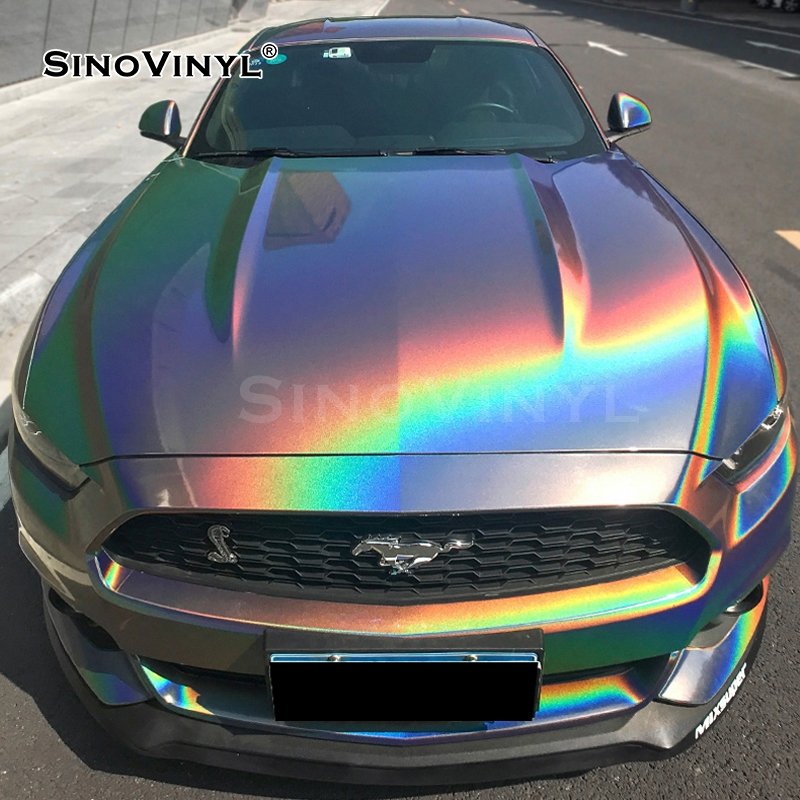
Macaron(Click on the picture for color options)
Magic(Click on the picture for color options)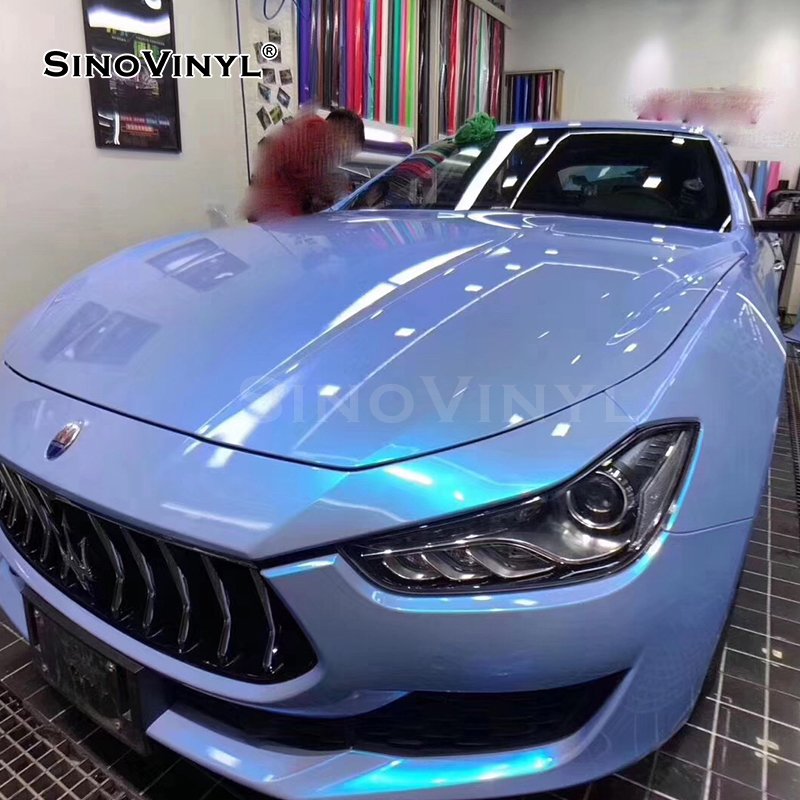
Chameleon(Click on the picture for color options)
Chrome(Click on the picture for color options)
Matte (Click on the picture for color options)
Gloss(Click on the picture for color options)
Glitter(Click on the picture for color options)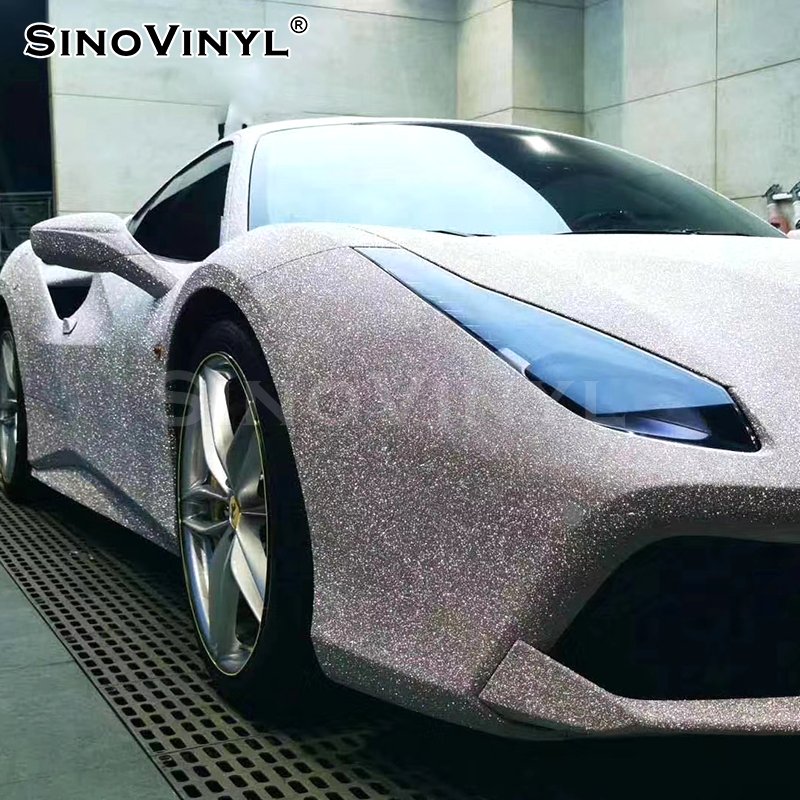
Aluminum Brushed(Click on the picture for color options)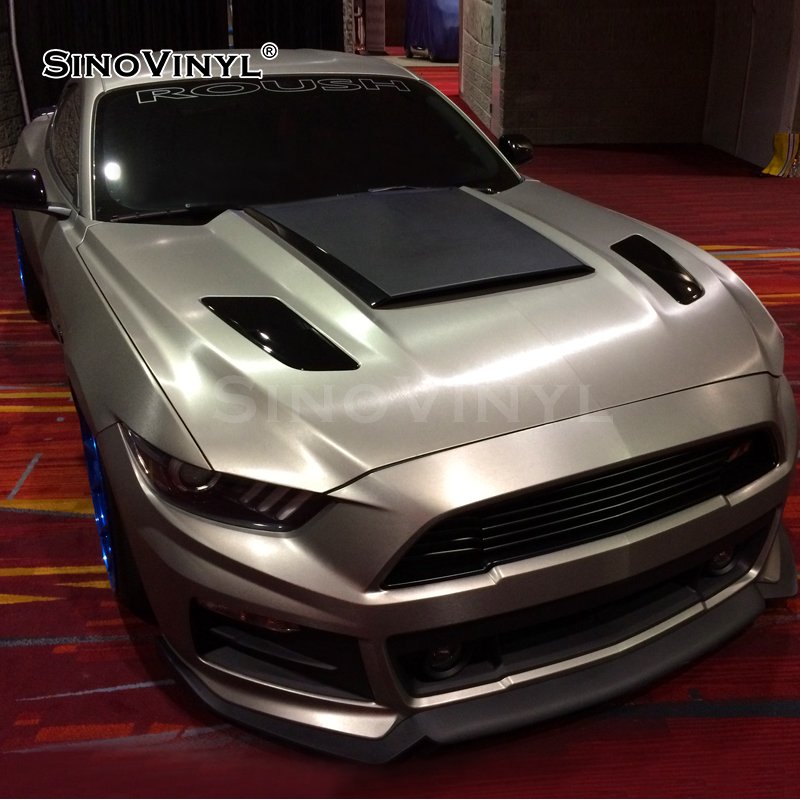
Camouflage(Click on the picture for color options)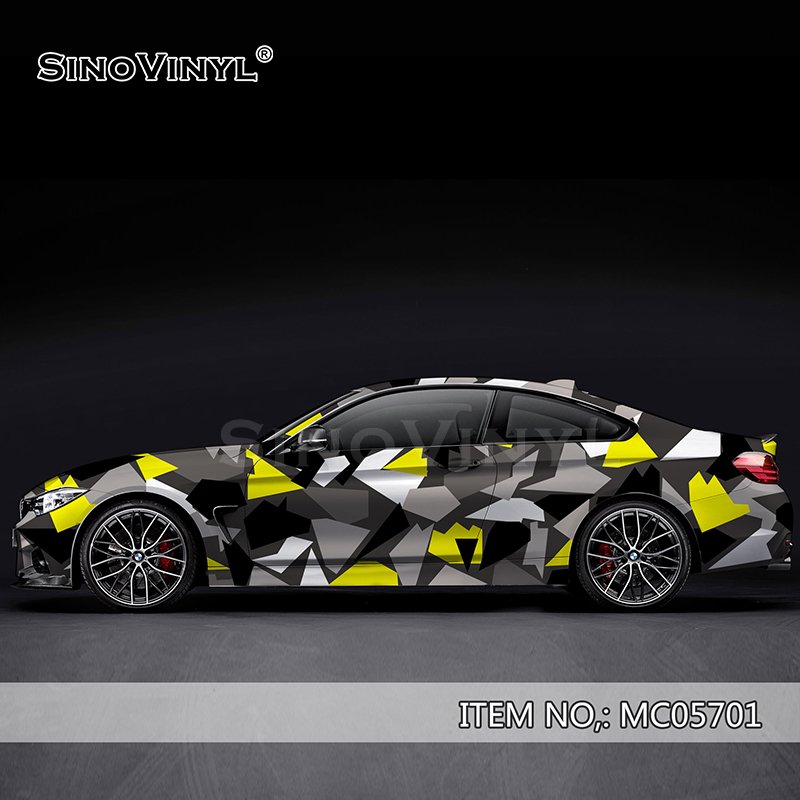
3D Ghost(Click on the picture for color options)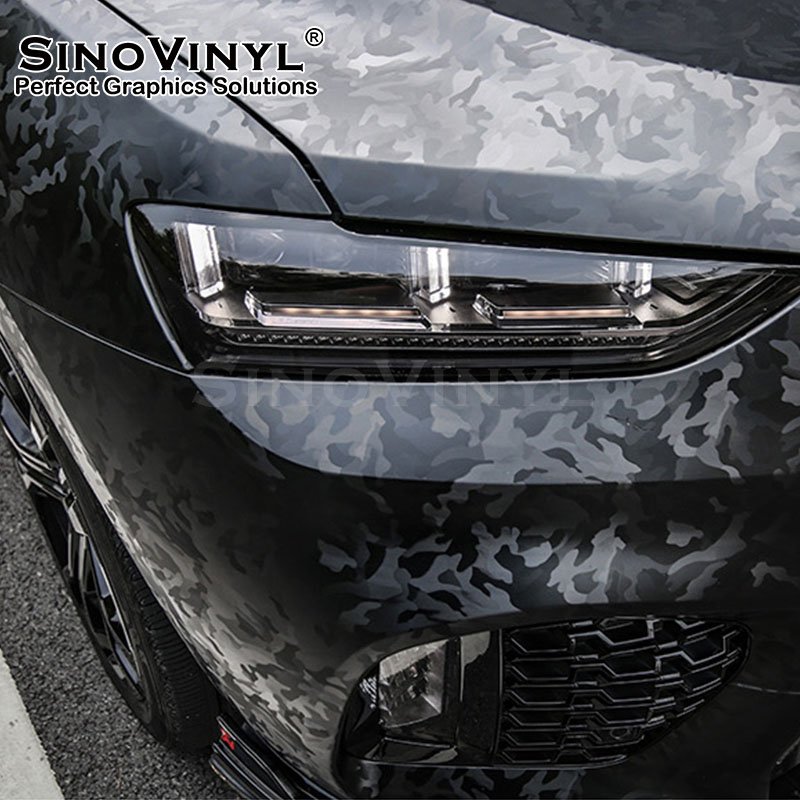
These will vary in price respectively but it is important to understand the types of finishes to know which one will suit you best.
Providing protection from contaminants, sun damage, and road debris, paint protection film, also known as PPF, can make a huge difference in the longevity of your vehicle’s paint.Here’s a step-by-step guide on how to apply paint protection film without damaging your car:
STEP 1 : Prepare the tools you need in advance
Car paint protection film application must be applied with speed and accuracy to avoid blistering. This is why all the materials that you are going to use must be within arm’s reach – the film, dish washing solution, cloth mitts and auto detailing supplies needed for this project.
STEP 2 : Clean the surface of the car
Ensure the removal of all dust, bugs, tar or oil stains from your car’s exterior. This is to eliminate the possibility of debris or other unwanted objects from getting caught between the film and your car’s surface; any of these contaminants will directly affect the appearance of your project.
STEP 3 : Wet your hands with the solution
This is to prevent the powerful adhesives of the paint protection film (PPF) from sticking to your fingers. Yes, you may get rid of the gluey feeling after the application but your PPF will not – your fingerprints will remain stuck to your car’s surface for a long time.
STEP 4 : Lay out the PPF
On a clean work table, lay out the PPF, with the liner side facing you. Remove the liner and apply the solution to the exposed adhesive. You should also apply the same solution to the surface where you will install the car paint protection film.
Carefully slide the film to the area you wish to apply it to. The sliding action is to prevent air from being trapped between the film and your car’s surface.
STEP 5 : Use a spatula to expel air bubbles
Get the squeegee and use it to flatten the film. Use overlapping strokes to ensure that all the remaining solution is removed. Do you notice any bubbles? You can resolve this by pushing the squeegee rapidly and directing it towards the edges.
Wipe the surface with dry cloth mitts to smoothen it out and to remove any excess liquid.
Check your project for any sign of blistering. If there are any, use a needle or pin to puncture it.
Run the squeegee along the edges and corners for total adhesion.
Let it dry completely for a maximum drying time of 48 hours.
When you add a clear protection film on your car, you create a protective barrier that keeps the damage away from the paint. That thick layer of polyurethane absorbs the damage. Here’s the best part, though — the self-healing paint protection film won’t show minor damage. Scratches disappear and chips fill in. With nonprotective films, you may have to replace them as chips show up or discoloration occurs. They keep your original paint job in good condition, but don’t always contain the technology to heal themselves and stay looking good. You may need to replace those films as they receive damage. The unique formulation of paint protection films allows them to adjust to these incidents.
Another reason people turn to these films is that they allow you to show off the natural beauty of your car’s original paint job. You don’t need to change it to add protection, and the film is crystal clear to let the original color shine through — no cloudy colors or tints in sight. You can even wax and wash your car like normal. The idea of these films is to be unnoticeable. They add protection without altering the look of your car.
When you’re done with your protective film — which probably won’t be for a long time, considering their service life up to 5 years — it peels off easily without damaging the underlying paint. After all, it’s meant to be protective. Whether you want to paint your car or sell it, you can confidently remove it without worrying about the paint underneath.
If you’ve been in the car-detailing industry for a while, you should be no stranger to paint protection films. After all, these films, otherwise known as clear bras, have been on the market for over 2 decades. What might surprise you is that vast improvements have been made on these films since the early days, and one of these improvements is that paint protection films are now more commonly produced using a TPU (Thermoplastic polyurethane) material instead of the PVC (Polyvinyl chloride) material that was used in the past. Although they might look similar at first glance, the two types of plastic are actually wildly different in a number of aspects.
Physical strength & elasticity
PVC (Polyvinyl chloride), is the world’s third-most widely produced synthetic plastic polymer. It is also the predominant material used in first-generation paint protection films. While PVC films do provide certain protection to the vehicle, its rigid nature makes installation very difficult, especially with wrapped edges and vehicles with more curvatures.
To coax the material into conforming to particular surfaces and shapes, installers often have to employ extra tools like heat guns or steamers in order to ensure a successful installation. Even then, the elasticity of PVC films tends to diminish over time. When that happens, the paint protection film will harden on the car and cause cracking on the surface. Not only does this cause an issue with the appearance of the vehicle, it also means that the eventual removal of the film will take much more time- and labour-intensive.
TPU (Thermoplastic polyurethane) on the other hand, possesses a different chemical structure that allows it more flexibility and durability than the traditional PVC material. Its pliability makes film adhesion and application much easier, which also means that installers will be less likely to run into problems like fingers and lift marks. Due to the relatively shorter installation time, it is also easier to ensure that no contaminants or dirt is trapped under the film surface in the process, giving you an unmarred finish.
An added advantage of TPU’s durability is that even after prolong exposure to UV rays and harsh road conditions, paint protection films made with this material are less likely to crack or harden, preventing lifted edges or difficulty in removal.
Damage to original car paint
As we’ve mentioned before, PVC films are not as pliable as those made with a TPU material. In order for the film to lie flat, a strong adhesive is generally used on these films. While this might benefit the initial adhesion, one of the potential downside is that when it comes removal time, the adhesive will end up lifting the original car paint as well. This shortcoming more or less defeats the purpose of installing the paint protection films in the first place.
As TPU-based paint protection films are much more yielding, the adhesives on the film can also be gentler. Although these films can stay on your car paint for years, they will be far less likely to cause any long term damage down the road. It is also much easier to replace a damaged film should the need arise, saving you precious time.
Film discoloration
One of the biggest concerns with car owners when it comes to PPFs is the discoloration of film, particularly when the film is installed on light-colored vehicles. Over time, the adhesive layer in PVC film reacts to UV rays, often causing major yellowing in the film and affecting the appearance of the vehicle.
However, newer TPU films feature a new and improved adhesive which helps the new film combat yellowing. Most films are also protected with a top coat that prevents chemicals or other substances from damaging the film surface, preserving the pristine look of the vehicle for longer.
Environmental concerns
Nothing lasts forever, not even paint protection films. We mentioned earlier that various reasons can cause problems in PVC paint protection films, and these films are subsequently removed. That is, however, not the end of the story. Once the PVC films are discarded, they start to disintegrate. In the process, chemical bonds within the films will be broken and dangerous chemicals are released as a result.
Because TPU films have a different structure than PVC paint protection films, there will be no harmful materials released during the degradation process. Not to mention, TPU films have a much longer life-expectancy than PVC films, and do not need to be replaced as often. All things considered, TPU-paint protection films are a much more environmentally-friendly option than the older models.
Conclusion
Over the years, PVC-paint protection films have gotten a bad reputation. The good news is, the technology in the industry has seen incredible advancements. The preconceptions we once had about paint protection films are being revolutionized every day, and along with it comes new products that provide comprehensive and reliable protection to your car paints. Even though TPU films are more expensive than PVC options, the quality of the products has proved them well worth the extra dollars.
We get asked this very vague question a lot and it is hard to answer without being given the correct relevant information.
First you want to try checking our “pricing” page which was made just to answer this question.
Getting straight to some general pricing, an average graphic advertisement wrap is about $2500 and the average color change paint replacement wrap is closer to $3600.
Chrome wraps? Most chrome wraps start in the $6,000 range… yes, it’s that expensive! Chrome vinyl is the most expensive film and hardest to install.
Want to just wrap your rooftop or hood? That can cost closer to $200-$450.
Interior parts? $400-$800.
All the chrome trim on the outside of your vehicle, $500 to $1200.
These are all of course just a ballpark range and your price could be slightly less or possibly even more expensive.
Now lets get to some determining facts which most people leave out when contacting us. The make model and year of the vehicle being wrapped AND what type of wrap.
Every vehicle is different as are most wraps. For example, a full size SUV would cost more than a compact 2 door sedan… but a full wrap on a compact sedan may cost more than larger cargo van which will not be wrapped on the bumpers or rooftop since in many cases it doesn’t make sense to wrap an area which is not visible.
Plus, the cargo van has less windows than the compact sedan which means less cuts and the type of wrap would also make a difference. Graphic wraps for business advertising are generally less expensive than paint replacement film because, the detail required for a color change is much more extensive therefore requiring more material and more labor.
For paint replacement film, the installation needs to be immaculate and that is where our expertise comes in.
When we say “the average paint wrap”, we mean standard colors.
Specialty films with texture like carbon fiber, brushed metal and leather can add roughly $800-$1000 to the price of a wrap, whereas Chrome or other exotic finishes can add anywhere between $2000 to $4500 to a wrap.
Here we have a formula to calculate how much vinyl is needed for a car wrap:
*length of your vehicle x 3 (for the two sides & the top of the vehicle from front to back) + extra for bumpers and mistakes (1.5m to 3m depending on complexity of car and your skill level)
For example:
2019 BMW 530i M: (4,954mm x 3) + 3m = 14.86m + 3m = 17.86m
the closest roll size is a so purchase a 1.52m x 18m 5ft x 60ft roll.
♦ Small size cars can be fully wrapped with 15m to 17m of vinyl.
example of vehicle sizes:
Audi A3 & A4, BMW 2 & 3 series, Mitsubishi Lancer, Subaru Impreza, VW Golf & Beetle & Jetta, Hyundai Elantra, Nissan Sentra, Mercedes C-class
♦ Midsize cars can be fully wrapped with 18m to 20m of vinyl.
examples of vehicles:
Audi A5 & A6, BMW 5 series, Mercedes E-class, Hyundai Sonata, Toyota Camry, Honda Accord, VW Passat & CC, Nissan Maxima/Altima, Ford Mustang, Corvette, Chevrolet Camaro
♦ Full-size cars; small SUVs, small trucks & small vans need 20m to 23m of vinyl
examples of vehicle sizes:
Audi A7 & A8, BMW 7 series, Mercedes S class,
♦ Full-size SUVs, trucks & minivans 23m to 30m of vinyl
examples of vehicle sizes:
Mercedes GLS, Suburban, Escalade, Land Rover, Cayenne, Hummer, H2, Voyager, Town & Country, Sienna, Routan
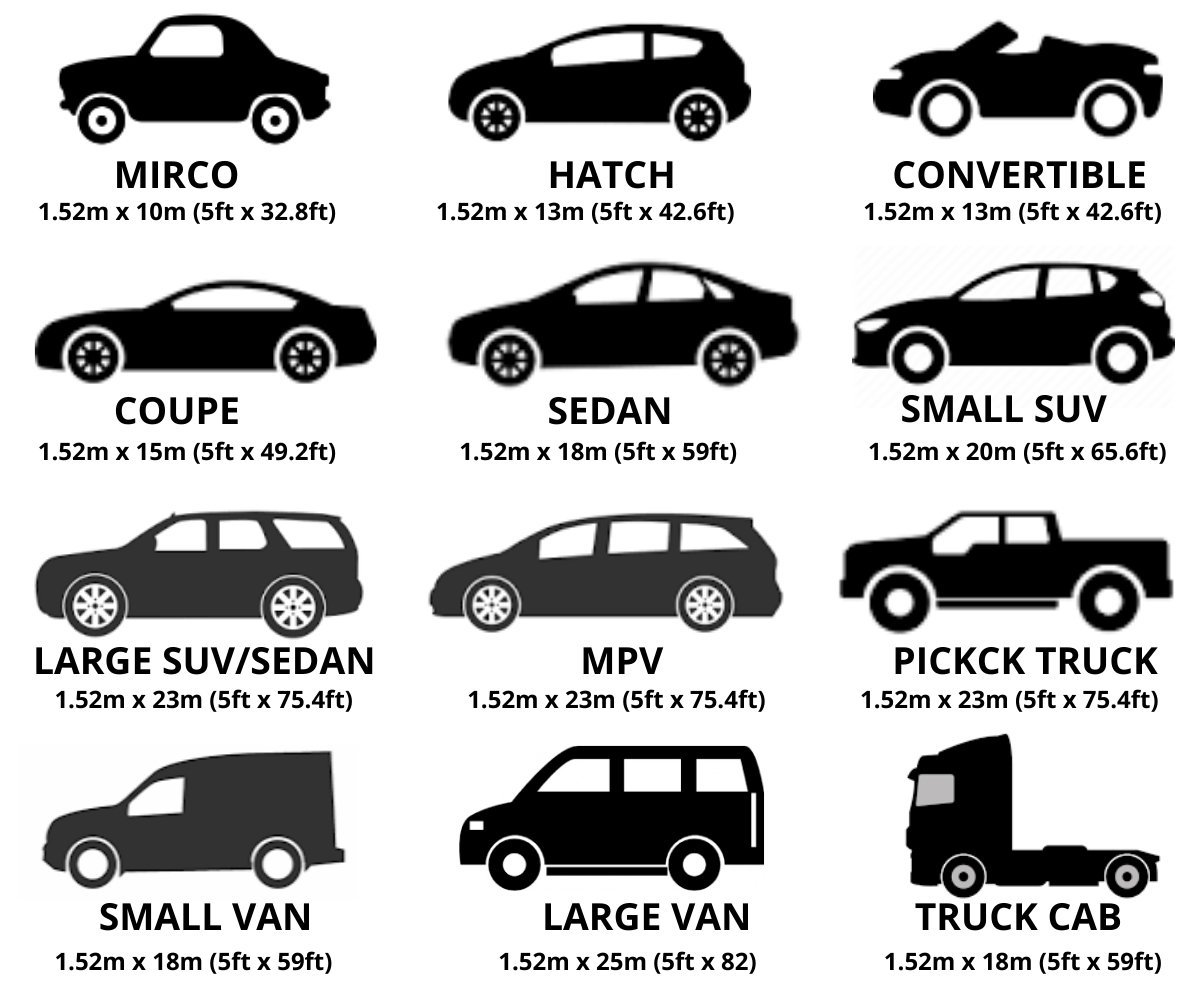
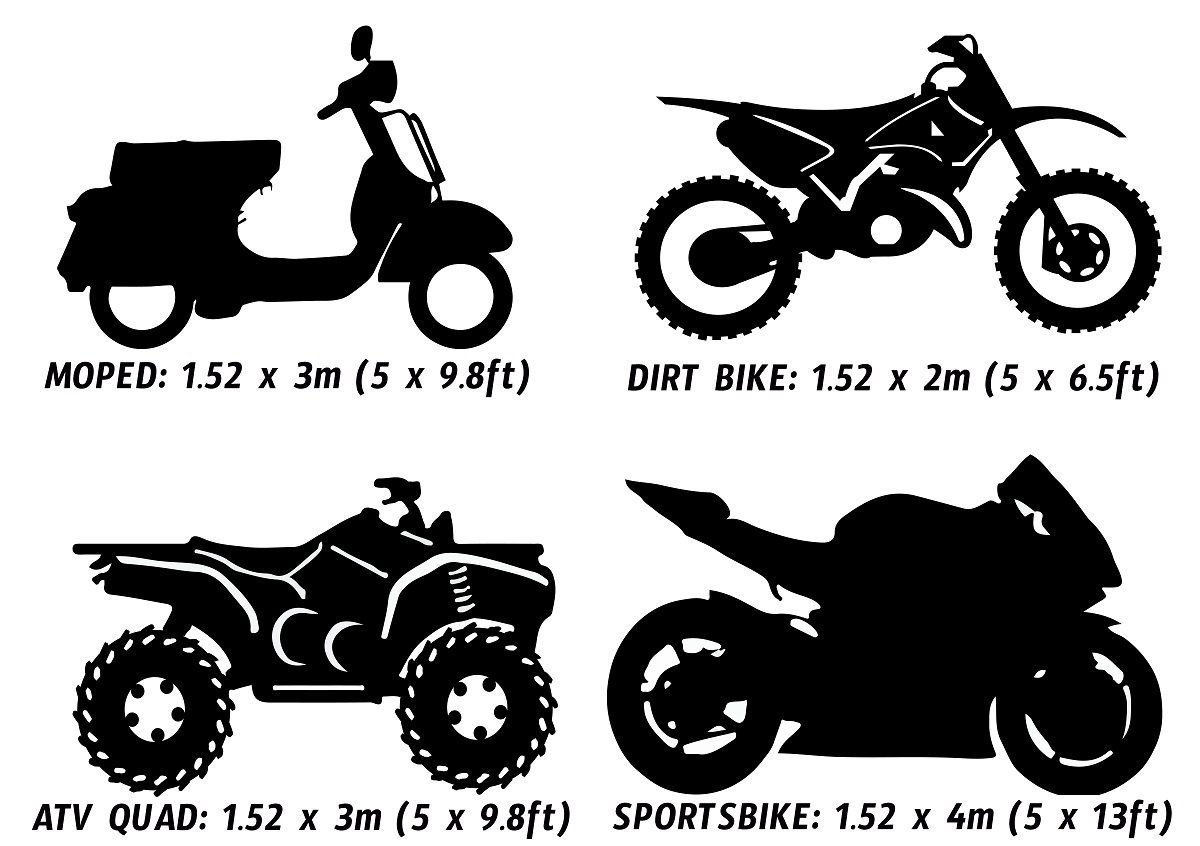
Does NOT devalue the resell value of your car like a paint job does.
Vinyl car wraps protect your OEM paint and are 100% removable.
Warranties and/or lease agreements remain valid. Painting can void warranties, increase the cost of insurance, and is not even an option with a lease
Cost for a vinyl vehicle wrap is considerably less than a comparable paint job.
Vinyl car wraps wear as well as, or better than paint – when properly cared for. Think of it like a skin for your laptop or a silicon cover for your phone. The vinyl can take a beating protecting the vehicle’s paint underneath.
Vinyl car wraps come in any color, even custom, and can have a matte, semi-gloss, gloss, brushed steel, carbon fiber, metallic flake, matte metallic, chrome and even leather-like finishes.
Expensive, color-matching paint fees are unnecessary for scratches or accident vehicles; just re-wrap the section that needs repair.
It’s difficult to tell it’s not paint. Due to our paint wrapping technique, it literally looks like it was sprayed on.
Affordably customize parts of your car. You don’t have to wrap your entire car; just your hood, roof, mirrors, stripes, etc.
Matte-paint jobs can be brittle and chip easily while vinyls are more durable and harder to scratch. In the event that repairs are needed, the part that was damaged can be easily replaced, providing a perfect match.
Hides dings or scratches and “freshens” the look of your vehicle.
Applying specialist car wrapping film to your car body will not damage your paintwork. However If you already have stone chips, abrasions or rust patches on your paintwork it’s important to remember that when the vinyl is removed it may pull loose paint off with it.
Vehicle wrapping is most effective when the whole vehicle is covered in a complete design, but you can chose to wrap just part of the vehicle, such as the rear doors or side panels.
No. It is just simple instructions for removing the graphics yourself.
Yes. The vehicle wrapping films are of high quality adhesives and can be easily removed within 5 years of the wrap being installed.
Nowadays, cars have entered the homes of thousands of people, and they have become an indispensable means of transportation in the majority of families, and the maintenance of cars has been paid more and more attention by the majority of car owners. The car paint has the self-evident importance in car maintenance. After all, the original car paint accounts for more than 15% of the whole car. The unique paint surface or color paint fully demonstrates the individuality, but when it is necessary to touch up the paint, it will be to pay more than ordinary paint, so as the latest product in the car paint maintenance industry-car paint protective film, which is more conducive to protecting the original car paint
Five advantages of car paint protective film:
1. Improve the brightness of the paint surface
Car paint protective film can improve the gloss and brightness of car paint. Generally, the brightness is about 5%-30%. After the paint protective film are pasted, you will notice the car. It looks brighter than before. This is the most important and most intuitive change (embodiment) in appearance.
2. Prevent physical scratches
The purpose of the car paint protective film is to protect the original paint of the car, which is particularly obvious on physical scratches. In fact, the toughness protection of the paint protective film is far higher than most people imagine. The car paint protective film looks like a thin layer, but in fact it protects the car much stronger than other maintenance methods. A slight scratching will only affect the car film, and will not harm the car paint at all. And small scratches and scratches can be automatically repaired. It can effectively prevent physical scratches such as stones and branches encountered in driving.
No longer worry about all kinds of inadvertent scratches during driving, such as roadside flowers and plants; Secondly, there is no longer any need to worry about resin insects, guano, etc. attacking the car paint.
3. Prevent chemical corrosion
In today’s increasingly serious environmental pollution, car paint not only needs to face the sand and stone attack and splashing and tree branches in daily life, but also must face acid rain corrosion and oxidation; Even in autumn and winter, the morning dew on the car will be Corrosion of car paint; There are also bird droppings and insect corpses that are common in daily driving; And a transparent protective film is attached to separate the car paint from the external environment. Don’t worry about all of the above.
4. Long-term preservation
When buying and selling second-hand cars, painted cars are generally not highly valued, and buyers can easily be suspected of being accident cars. The paint transparent protective film perfectly protects the original car paint and can improve the brightness of the car paint. It protects the car paint and also plays a beautiful role. The brightened car paint can add value to your car when buying and selling second-hand cars 1 -2%.
5. Convenience
Car washing is more convenient. When we wash the car, the most fearful thing is that the sponge or rag is not clean and contains small particles. There are traces on the car body, and after installing paint protective film, there is no need to worry about this. As long as the coating is still there, all small scratches can be repaired.
*We respect your confidentiality and all information is protected.
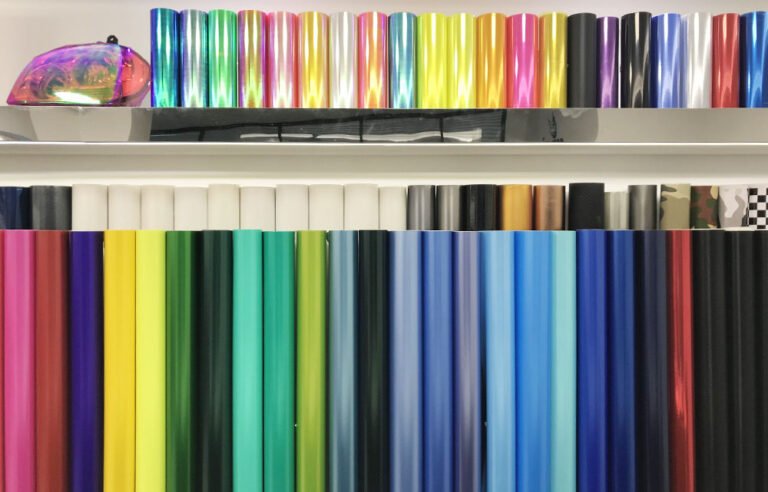
WhatsApp us


